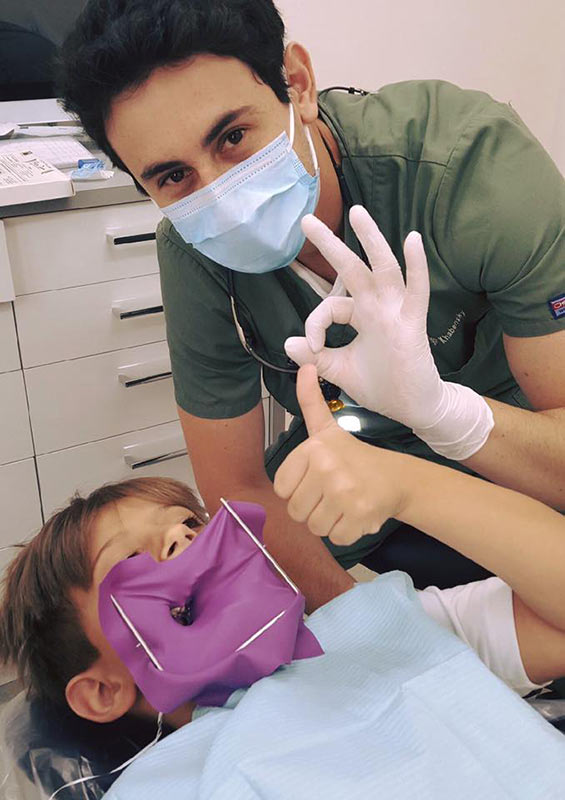Pediatric Dental Emergencies: What Moms And Dads Need to Know for Quick and Effective Treatment
In the world of pediatric healthcare, oral emergency situations can arise unexpectedly, leaving moms and dads uncertain of how to handle the circumstance successfully. Comprehending the indications, types of injuries, and instant activities to take can make a significant difference in the result for a child's oral health. With a quick and proper action, moms and dads can alleviate possible long-lasting effects and guarantee their youngster gets the needed treatment quickly. By being prepared and informed, parents can play an important function in guarding their kid's oral wellness.
Indicators of Pediatric Dental Emergencies
When analyzing pediatric dental emergencies, it is essential for parents to be cautious for details indications indicating possible significant problems. One of the primary indicators of a dental emergency in youngsters is consistent tooth pain that is not alleviated by non-prescription discomfort medications.

Typical Kinds of Dental Injuries
Typical sorts of dental injuries in children frequently arise from crashes or sports-related activities that can lead to different types of injury to the mouth and teeth. One usual oral injury is a broken tooth, which can vary from a minor chip to an extra extreme break including the internal layers of the tooth. Another frequent injury is a knocked-out tooth, where instant action is essential to boost the chances of conserving the tooth. Kids might additionally experience oral injuries like tooth invasion, where the tooth is pressed right into the jawbone, or avulsion, which is the full variation of a tooth from its socket. Additionally, oral injuries can include luxation, where the tooth is removed but not completely knocked out, or soft tissue injuries to the gum tissues, lips, or tongue. It is necessary for parents to be familiar with these common kinds of oral injuries to give punctual and appropriate care in situation of emergency situations.
Immediate Emergency Treatment Procedures
Upon running into a pediatric oral emergency, swift and ideal initial aid measures are crucial to relieve discomfort and avoid further difficulties. For a knocked-out tooth, instruct the child to delicately wash the tooth with water, trying not to touch the origin, and place it back in the outlet if my review here possible. If re-implantation is not viable, save the tooth in a container of milk or the kid's saliva until getting to the dental expert.
When to Seek Specialist Help
Looking for timely oral care from a pediatric professional is imperative in resolving prospective problems arising from pediatric oral emergencies. Parents should look for specialist help quickly if their kid experiences extreme tooth pain, face swelling, bleeding that doesn't quit, a knocked-out irreversible tooth, or any kind of trauma to the mouth or face. These indications show a major oral issue that calls for prompt interest from a pediatric dental practitioner.
Furthermore, if a youngster complains of consistent tooth level of sensitivity to warm or chilly, trouble eating or swallowing, or indications of infection such as pus around the gum tissues, parents ought to not delay in seeking expert oral treatment. These signs could show underlying dental issues that need to be attended to immediately to stop further problems.
In cases of dental emergencies, it is crucial for moms and dads to call a pediatric dental expert as quickly as feasible to make sure appropriate diagnosis and treatment - pediatric dentist. Postponing professional assistance can lead to exacerbated oral issues and prolonged pain for the youngster

Avoiding Future Oral Emergency Situations
To minimize the chance of try this out future oral emergencies, parents should prioritize consistent oral health practices and routine visits to a pediatric dental expert for preventative care. Urging youngsters to comb their teeth two times a preventive dentistry day with fluoride tooth paste and teaching them the proper technique for two mins each time can dramatically decrease the threat of oral problems.
Normal sees to a pediatric dental professional for check-ups and cleansings are vital for early discovery of any possible oral problems. These consultations allow the dentist to keep an eye on the youngster's dental wellness, offer specialist cleansings to eliminate plaque and tartar buildup, use fluoride therapies for added defense, and offer guidance on appropriate dental care methods.
Conclusion
Finally, moms and dads ought to be mindful of the signs of pediatric oral emergency situations, usual types of oral injuries, immediate emergency treatment steps, and when to look for professional assistance. By taking aggressive steps to protect against future dental emergencies, parents can guarantee fast and reliable treatment for their kids. It is important to stay notified and prepared in order to deal with any kind of dental emergency that may emerge.
Comments on “Finding the most effective Pediatric Dentist for Your Youngster's Dental Health”